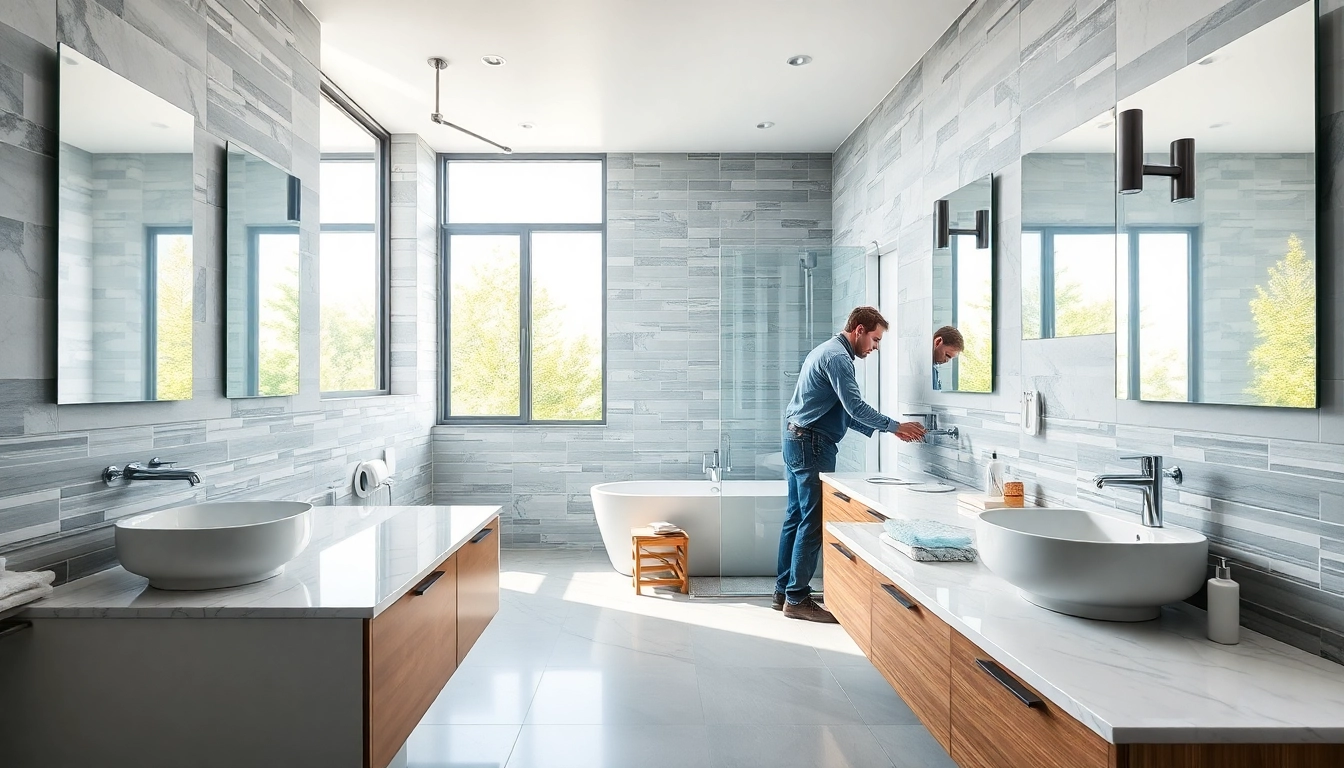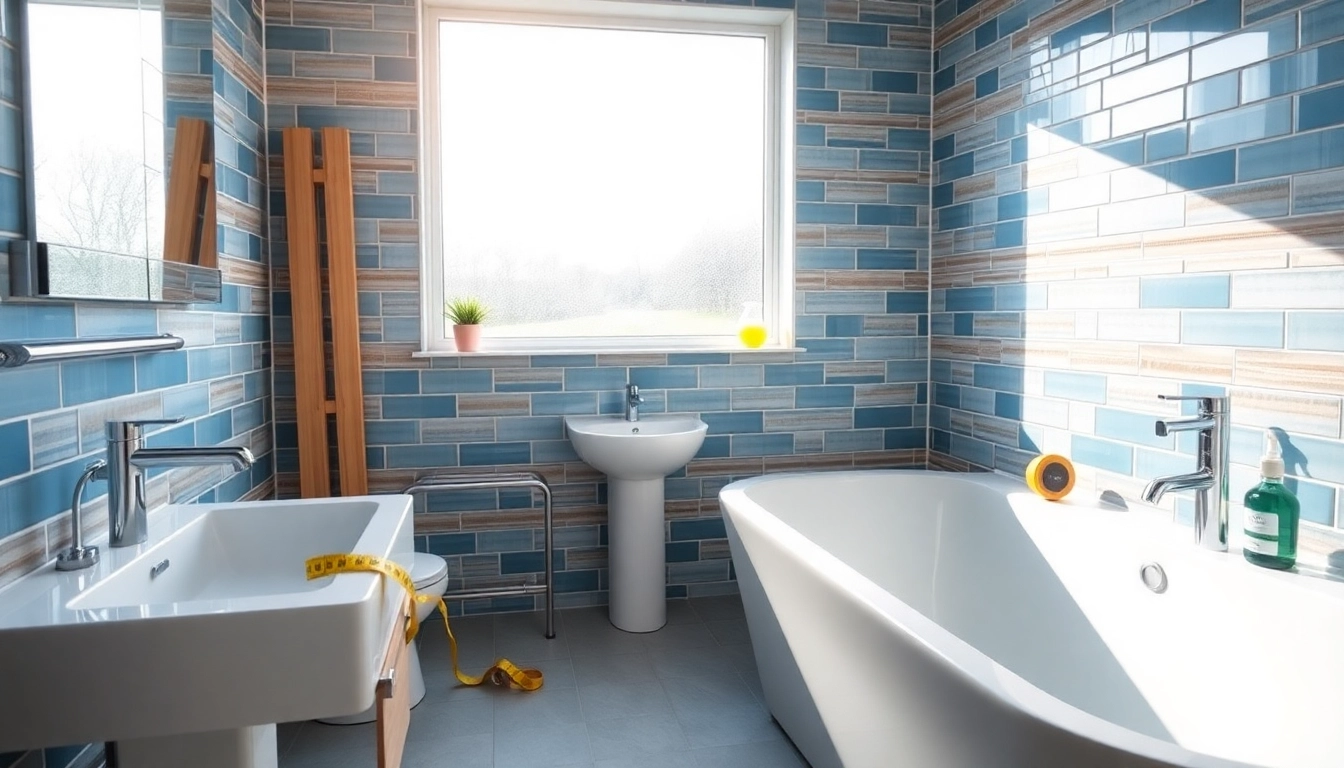Understanding the Role of Bathroom Fitters
Bathroom fitters play a crucial role in the home renovation process, especially when it comes to creating a functional and aesthetically pleasing bathroom. Their expertise not only includes the physical installation of various components, but they also contribute significantly to the overall design and planning of the space. Whether you’re upgrading an outdated bathroom, redesigning one that no longer meets your needs, or building a new space from scratch, hiring professional bathroom fitters can make the process easier and more efficient.
What Services Do Bathroom Fitters Provide?
Bathroom fitters provide a wide range of services that span all aspects of bathroom remodeling. Typically, this includes:
- Design Consultation: Collaborating with homeowners to create a plan that meets their stylistic and functional needs.
- Plumbing Work: Installing and maintaining plumbing systems for showers, tubs, sinks, and toilets.
- Tiling and Flooring: Laying tiles and flooring materials that are both functional and visually appealing.
- Cabinetry and Vanity Installation: Installing cabinets and vanities that complement the overall design.
- Fixture Installation: Installing faucets, showerheads, toilets, and other essential bathroom fixtures.
- Lighting and Electrical Work: Incorporating proper lighting and electrical solutions for safety and ambiance.
How to Choose the Right Bathroom Fitter
Choosing the right bathroom fitter requires careful consideration to ensure that the chosen professional can effectively handle the specific requirements of your project. Here are several factors to keep in mind:
- Experience and Expertise: Look for fitters who have a proven track record in bathroom renovations and remodeling.
- References and Reviews: Check online reviews and ask for references to gauge the satisfaction levels of previous clients.
- Portfolio: Review their past work to assess their style and proficiency in handling similar projects.
- Licensing and Insurance: Ensure they are properly licensed and insured to protect yourself from potential liabilities.
- Quotes and Pricing: Obtain multiple quotes, comparing what’s included to ensure transparency in pricing.
Common Misconceptions about Bathroom Fitters
There are some prevalent misconceptions that homeowners may have about bathroom fitters, which can lead to misunderstandings about the services they provide. Some of these include:
- All Fitters are the Same: In reality, skills and expertise can vary greatly, emphasizing the need for thorough vetting.
- Remodeling is Always Expensive: While costs can be significant, there are various options available to fit different budgets and needs.
- DIY is Always Cheaper: While do-it-yourself projects can save money upfront, professional fitters can avoid costly mistakes in the long run.
Essential Tools for Bathroom Fitters
Successful bathroom fitting requires a variety of tools and equipment to ensure that jobs are completed efficiently and effectively. Here’s a breakdown of essential tools for every bathroom fitter.
Must-Have Tools for Every Job
Bathroom fitters should equip themselves with an array of tools that cover all aspects of their work:
- Measuring Tape: Essential for taking accurate dimensions for fittings and fixtures.
- Drills and Drill Bits: Used for making holes in walls or fixing components in place.
- Saws (Hand and Power): For cutting tiles, wood, or other materials to size.
- Plumbing Tools: Wrenches, pipe cutters, and plungers are necessary for plumbing work.
- Tiling Tools: Including tile cutters, grout float, and levels.
Safety Equipment and Best Practices
Safety should always be a priority in any working environment. Bathroom fitters should follow best practices to protect themselves:
- Protective Eyewear: To protect against debris and dust.
- Gloves: For hand protection against hazardous materials.
- Dust Masks: Important when working with materials that create dust.
- Ear Protection: Essential when using loud power tools.
Innovative Technologies in Bathroom Fitting
As technology advances, bathroom fitting also evolves, making it important for fitters to stay updated on innovative tools and techniques:
- 3D Design Software: This allows fitters to create visual layouts, helping clients envision projects before work begins.
- Laser Leveling Tools: Offering precision for aligning fixtures and tiles.
- Smart Bathroom Fixtures: Integrating IoT technology into showers, toilets, and faucets for increased functionality.
Planning Your Bathroom Remodel
Planning is a critical phase of any bathroom remodel, and understanding the key components can help ensure success. A well-organized plan can save time, money, and reduce stress throughout the project.
Budgeting for Bathroom Fitting Services
Setting a budget for a bathroom remodel involves considering various factors that contribute to costs:
- Design Costs: Fees for designer consultation and any architectural plans needed.
- Fixture Choices: Costs of sinks, toilets, and other hardware can vary widely based on brand and quality.
- Labor Costs: Depending on the experience level, labor costs can range significantly, so it is important to obtain detailed quotes.
- Unexpected Expenses: Always leave wiggle room in your budget for unforeseen issues such as plumbing problems or structural repairs.
Design Trends Shaping 2024
Staying on top of current design trends can help you make informed decisions about your remodel:
- Minimalist Styles: Clean lines and functional spaces are becoming increasingly popular.
- Eco-Friendly Materials: Sustainable and durable options are trending as homeowners seek to reduce their environmental impact.
- Smart Technology: Innovations such as smart mirrors and automated lighting are integrating into modern designs.
Permits and Regulations for Bathroom Remodeling
Before beginning any work, it’s vital to understand the necessary permits and regulations that might affect your project:
Many regions require specific permits for plumbing and electrical work. Ensuring compliance with local building codes will not only keep you safe but can also prevent future complications if you decide to sell your home.
Challenges and Solutions in Bathroom Fitting
No remodeling project is without challenges. Understanding common issues can help homeowners prepare and strategize solutions effectively.
Common Bathroom Remodeling Problems
Several common problems may arise during a bathroom remodel, including:
- Water Damage: Often a significant issue in bathrooms, necessitating careful inspections of existing plumbing.
- Space Limitations: Small bathrooms can become challenging when trying to achieve functionality and aesthetics.
- Unexpected Costs: Factors like outdated plumbing or electrical systems can inflame initial budgets.
Strategies for Overcoming Installation Challenges
Addressing challenges as they arise is key to a successful remodel. Consider these strategies:
- Thorough Planning: Mapping out the project in detail can help foresee potential problems.
- Communicate with Professionals: Regular discussions with your bathroom fitter can mitigate misunderstandings and ensure that everyone is on the same page.
- Flexible Schedules: Be prepared for delays and adjust timelines as necessary, while keeping contractors informed.
The Importance of Professional Consultation
Consulting with a bathroom fitter before beginning the remodeling process is crucial. They can provide insights on the feasibility of certain designs, recommend materials, and ensure that all work complies with local guidelines, saving you from costly mistakes down the line.
Measuring Success: Evaluating Your Bathroom Remodeling Project
Once your bathroom remodel is complete, it’s time to measure success. Understanding how to evaluate the effectiveness of your remodel can provide insights for future projects.
Key Performance Indicators for Bathroom Fitters
Performance indicators can provide insight into the success of bathroom fitters:
- Job Completion Time: How well did fitters stick to timelines?
- Budget Adherence: Was the project completed within the approved budget?
- Quality of Work: Assess the craftsmanship, including safety and functionality of fixtures.
Client Satisfaction: Gathering Feedback post-Installation
After project completion, soliciting feedback can help gauge client satisfaction:
- Surveys: Distributing a client satisfaction survey can provide valuable insights.
- Follow-Up Communication: Engaging in conversation even after the project can demonstrate your commitment to client satisfaction.
Improving Future Projects Based on Past Experiences
Each project can teach valuable lessons that improve future work. Analyze feedback carefully and adjust processes to better meet client needs in subsequent renovations. This proactive approach can enhance your reputation and foster long-term relationships with clients.



